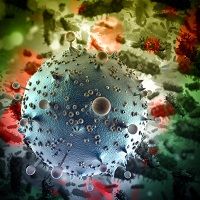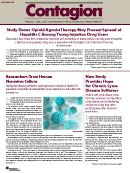New Line of HIV Treatment Identified for Patients Ineligible for Efavirenz
A national clinical trial has found non-efavirenz antiretroviral therapy effective as a first-line treatment, which is good news for patients with HIV who are ineligible to usea the common drug.

A national clinical trial has found non-efavirenz antiretroviral therapy effective as a first-line treatment, which is good news for HIV patients who are ineligible to use the common drug, Emory University researchers claimed
Women planning pregnancy and individuals with severe mental illnesses are two groups known to not use antiretroviral therapies which contain efavirenz.
In a randomized, controlled trial, investigators looked at the efficacy of 300 mg/d of atazanavir with 100 mg/d of ritonavir, 800 mg/d of darunavir with 100 mg/d of ritonavir, or 400 mg/bid of raltegravir, three non-efavirenz treatment regimens. In addition, the 1809 participants were given 200 mg/d of emtricitabine and 300 mg/d of tenofovir disoproxil fumarate.
The 1809 subjects, tested at 57 sites in the US and Puerto Rico, were included in the study if their HIV-1 RNA levels greater than 1000 copies/mL , were never treated with antiretroviral therapy, and had no resistance to nucleoside reverse transcriptase inhibitors or protease inhibitors.
To gauge the treatments’ effectiveness, investigators looked for outcomes involving virologic failure, which was defined as an “HIV-1 RNA level greater than 1000 copies/mL at or after 16 weeks and before 24 weeks or greater than 200 copies/mL at or after 24 weeks,” and patients who stopped atazanavir, raltegravir, or darunavir use due to toxicity, which was considered tolerability failure. The researchers also looked for virologic efficacy and tolerability outcomes.
From 96 weeks of follow-up, the researchers found “all pairwise comparisons of incidence of virologic failure over 96 weeks showed equivalence within a margin of equivalence defined as −10% to 10%. Raltegravir and ritonavir-boosted darunavir were equivalent for tolerability, whereas ritonavir-boosted atazanavir resulted in a 12.7% and 9.2% higher incidence of tolerability discontinuation than raltegravir and ritonavir-boosted darunavir, respectively, primarily because of hyperbilirubinemia.”
While all three treatments were effective at restoring the immune system, raltegravir-based therapy was the most effective in regards to tolerability and virologic response.
“We are very pleased that our study showed the drug combinations tested, without efavirenz, are good options for initial HIV antiretroviral therapy,” the study’s contributor Jeffrey L. Lennox, MD, a professor of medicine at Emory University School of Medicine and Grady Memorial Hospital, commented in a statement. “This is critical information for patients who cannot tolerate efavirenz, and we believe this head-to-head comparison will provide useful information to guide clinicians about choosing among them.”

